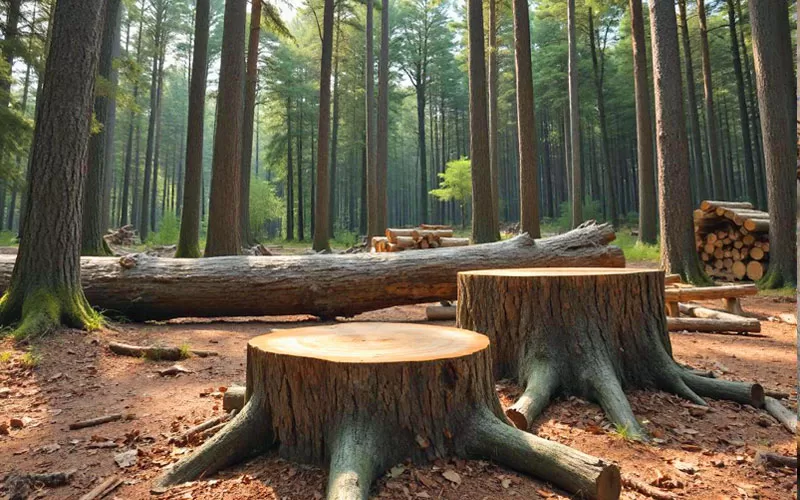
As the temperature begins to fall, thoughts to a cozy fire begin to emerge. This can keep you and your family warm and toasty as fall transitions into winter. Instead of purchasing firewood, you can make it more cost-effective if you make firewood yourself. Below are tips for cutting down a tree, sectioning the trunk, and chopping the wood into burnable pieces. These are four of the most important steps to make firewood.
Check the Chainsaw is in Working Order
A chainsaw is the ideal tool to cut trees down without too much strain. However, before you begin sawing down the chosen tree to make firewood, you must ensure the chainsaw is operational. There are five main points to check and maintain on a chainsaw, such as the antivibration system, chain brake, chain catcher, handlebars, and throttle interlock.
To avoid kickbacks, the chain should also be checked and sharpened with a chainsaw sharpener if necessary. This will also ensure the chainsaw continues working with maximum efficiency and cuts through wood easily. If you use a dull chainsaw, it will require additional force to cut through the tree, which can result in serious injury or even a fatality. If everything looks to be in working order, you can test whether the chainsaw is operating correctly and safely before beginning your task.
Safely Fell a Tree
The first step in cutting down a tree safely is to inspect the area surrounding the tree. You must try to calculate the felling area and ensure the area if clear of power lines and structures that could be damaged by a falling tree. You should decide which direction you want the tree to fall. This can be accomplished by putting your left shoulder against the tree and creating a 70-degree cut with the chainsaw on the side of the tree facing the direction it will fall. The cut should be roughly a quarter of the tree’s diameter. A second cut can then be made to create the notch; this will be achieved using the chainsaw sideways to cut horizontally to meet the 70-degree cut.
With the notch created, the felling cut is next. This horizontal cut will be made on the opposite side of the tree, just above the notch. You will saw until there is enough room to insert a wedge. The wedge can then be inserted into the previous cut, facing the direction the tree will fall. You can then drive the wedge further in to finish the cut, although you do not want to cut through the tree fully; 10% of the trunk’s width should be left as a hinge. As the tree begins to fall, move away a safe distance.
Cut Logs to Length
Before cutting logs for firewood, remove all branches and stabilize the trunk with wedges; this is often easier to cut to length. If the ground is flat enough, the tree can be cut where it has fallen, but make sure the chainsaw does not hit the ground. When you are ready to begin cutting logs, mark the trunk where you would like to cut with chalk or spray. These marks will usually be placed in meter-long intervals. The chainsaw can then be used on all marks to cut three-quarters of the way through the tree. After cutting at all marks, turn the tree over and secure it again with the wedges. You will then cut through the tree at all marks so the sections are completed.
Split, Stack, and Season the Firewood
Once the tree trunk is sawed into sections, it is time to begin splitting the logs. This is essential to ensure the wood dries; split wood has more surface area to speed up this process. You can split the wood along its radial lines with an axe. The split wood should then be stacked in a way to allows air to circulate around the wood, further enhancing the drying process. It is encouraged to use alternating directions when stacking the split wood and elevate the wood from the ground by a pallet. Spaces should be left between each piece of wood so air can move around them.
Wood should be dried for a long time, sometimes more than a year after chopping. Some trees, like pine, will take six months to dry; harder woods will require more time. Once the wood has been dried sufficiently for firewood, you can knock two pieces of wood together to check if it is ready to burn; if it is ready to burn, it will make a hollow ringing sound.
By following the four steps listed in this post, you will have perfect firewood to burn in the fireplace during fall.
Leave a Reply